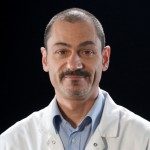Présentation
About PREDEMICS
Infectious diseases have always been a threat to the human population, but since the end of World War II, medical progress fostered the hope that pathogens could be controlled if not eradicated through prophylactic and curative treatments. However, recently, increasing numbers of novel emerging viruses or mutants of known viruses (mostly zoonotic) have periodically emerged, and in some cases posed pandemic threats.
The aim of this project is to study the key stages of viral disease emergence leading to successful host switching:
1) Exposure and introduction: the initial single infection of a new host species,
2) Infection: the epidemic or sustained endemic human to human disease transmission, including spillovers that progress to cause small local chains of transmission before epidemic fade out,
3) Spread and
4) Post-transfer adaptation leading to widespread transmission and pandemic.
We will study viruses selected according to their relevance for the fundamental and practical questions posed by these stages: IAV, HEV, LYS and JEV. They also represent the three main routes of transmission (respiratory, faecal-oral and vector-borne) focusing on viruses involving the key sources and disseminators of emerging zoonotic agents in recent years (birds, pigs, bats, carnivores and arthropods). All of the information will be compiled in a data-sharing platform and will feed a modelling component. The project will also establish a training component directed towards students, public health specialists and virologists.
The key questions to be addressed will be:
1) Which key factors (considering environment, ecology, anthropology, virus evolution and virus-host interplay) are associated with the highest risk of virus emergence?
2) What is the impact of the transmission route on viral evolutionary trajectories and cross-species transmission?
3) How do viral and host determinants interact to favour/limit the potential for cross-species transmission and adaptation to a new host?
4) Which intervention strategies are most suitable to limit the potential for cross-species transmission and spread in the new host?
WorkPackage 1 : Environment, ecological and anthropological factors
This workpackage studies the role of the environment and its changes, the distribution and the natural movement of reservoir species and the role of humans (anthropological factors) on the dynamics of viruses.
The persistence of the pathogen in the environment and its maintenance in waters (IAV, HEV), air and on surfaces (IAV) are quantified in natural settings by molecular methods (qRT-PCR) and virus viability assays in cell culture where possible. For this, we use validated protocols and detection methods, including protocols for virus recovery, such as those yielded by RIVERS and FLURESIST. Laboratory experimental settings for liquid environments, air and surfaces allow the simulation of parameters involved in virus survival outside its hosts. Viraemia levels observed in pigs and possibly other vertebrates with JEV are also investigated in natural and laboratory conditions to model transmission between vector and vertebrates. The impact of local environmental changes on animal species ecology and behaviour and virus circulation including viral persistence in the environment are estimated by the analysis of data already collected through pre-existing projects or generated by this program (animal population mapping including generalised mapping through modelling starting from local data). The ecotoxicity due to pharmaceutical action carried out at the population level (use of antivirals) are also addressed. A multilevel map of the current distribution of hosts (mammals, birds, arthropods) and of their natural movements is developed using all available data. We also choose a relevant set of anthropological factors including man-driven movements of reservoir and vector species such as road networks, commercial circuits of specific domestic and wild animal trades. Further, using existing data and new observations on bats, foxes (LYS) and on birds (IAV), this workpackage lists animal and viral variants in order to estimate the biodiversity of pathogens and hosts. It also dissects geographic and ecological niche overlaps, complementary or overlapping food chains to understand the windows of opportunity for inter-species viral transmission.
PREDEMICS website: http://predemics.biomedtrain.eu




